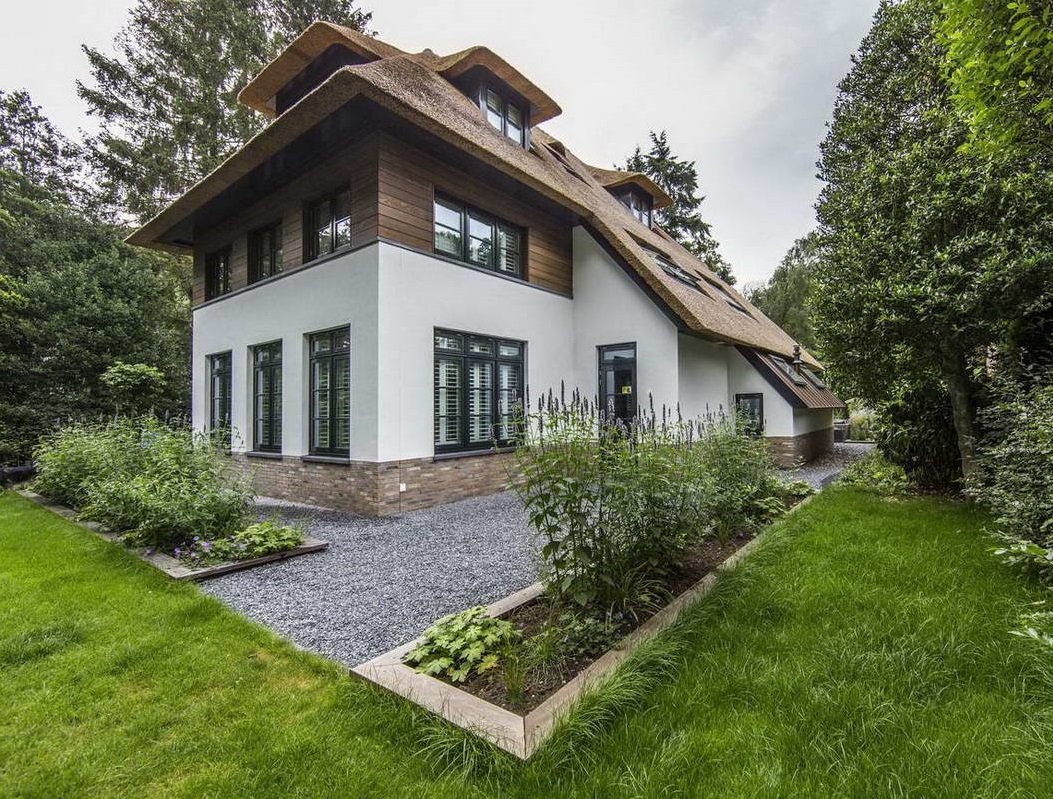#12856. Modern Facade with Traditional Thatched Roof: A Harmony of Contrasting Textures

This modern house is an excellent example of a harmonious combination of traditional and contemporary architectural elements. The building's facade demonstrates an interesting compositional solution with a clear division into three visual zones: the lower part in white plaster, the central section with dark wood cladding, and the upper part under a traditional thatched roof.
Particular attention is drawn to the contrast between the smooth white plastered surface of the first floor and the textured wooden cladding of the second level. This technique not only creates visual interest but also emphasizes the horizontal articulation of the building. The facade is further enriched by a brick base, which creates a visual foundation and adds a third texture to the overall composition.
Window openings with black frames are organized in a precise geometric pattern, giving the building a contemporary character. The large panoramic windows on the first floor provide abundant natural light and a visual connection with the surrounding landscape, while the dormer windows are organically integrated into the pitched roof.
The traditional thatched roof with its characteristic projecting eaves gives the building a countryside charm and references historical architecture, demonstrating respect for local building traditions. It's interesting to note the flowing lines of the roof, which soften the overall geometry of the building.
In the design of the adjacent territory, there is a noticeable aspiration to create a well-groomed but not detail-overloaded landscape: the separation of functional zones using gravel paths, neat raised flowerbeds, and a harmonious combination with the surrounding nature. This complements the architectural appearance of the house and creates a cohesive ensemble.
When designing your own facade, you might adopt the following techniques: combining different finishing materials to create textural and color contrast; using horizontal zoning to visually lighten the volume of the building; incorporating traditional elements (like a thatched roof) into a modern context; applying large window openings with contrasting frames to create an expressive rhythm on the facade.